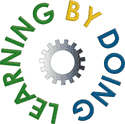What do candidates on the Plumbing Maintenance for Facilities Management Engineers Course actually do?
The Plumbing Maintenance Course begins by looking at a range of plumbing tools, what they are used for and how they should be used safely. The following are pages taken from the course notes in this section of the course, describing plumbing tools and how to make pipework joints properly:
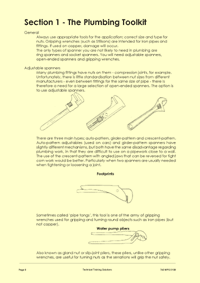 |
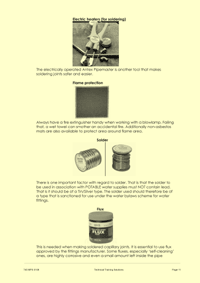 |
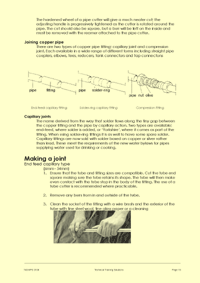 |
Page 8 of the course notes for the Plumbing Maintenance Course, describing the plumbing tools used |
Page 11 of the course notes for the Plumbing Maintenance Course, describing more of the plumbing tools used |
Page 15 of the course notes for the Plumbing Maintenance Course, describing how pipework joints should be made |
During the course candidates are shown a range of plumbing fittings, many of which have been specially sectioned so that the inner workings can be seen. The components are discussed as to their suitability for various applications such as gravity fed and high pressure systems. We also look at the Water Byelaws, Health and Safety issues and Building Regulations during this part of the course.
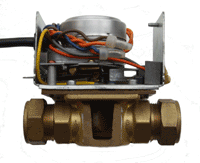 |
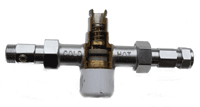 |
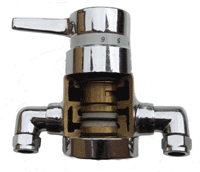 |
One of the sectioned components used on the Plumbing Maintenance Course - a diverter valve |
One of the sectioned components used on the Plumbing Maintenance Course - a mixer valve |
One of the sectioned components used on the Plumbing Maintenance Course - a thermostatic mixer valve |
Candidates begin their practical exercises by annealing, swageing and bending copper tubing. This is followed by a demonstration of soldering which the candidates then practice under the supervision of their instructor. Candidates practice annealing, swageing and bending a variety of copper tubing.
 |
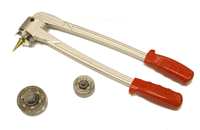 |
 |
One of the pipe benders used on the Plumbing Maintenance Course |
One of the swageing tools used on the Plumbing Maintenance Course |
One of the soldering tongs used on the Plumbing Maintenance Course |
When bending and joining has been mastered the candidates must produce a demonstration piece to a drawing that contains a range of fittings, e.g. end feed, compression, pre-soldered, quick fit and swaged. The test piece is then filled with water and a pressure test is conducted to demonstrate the integrity of all the joints.
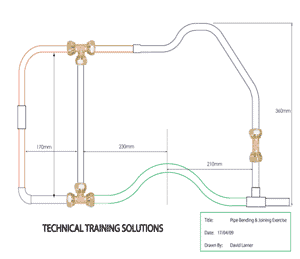 |
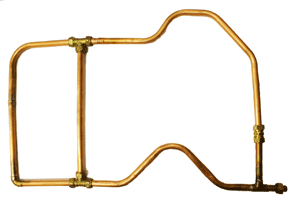 |
One of the drawings for the copper pipe exercise on the Plumbing Maintenance Course |
One of the assembled test-pieces for the copper pipe exercise on the Plumbing Maintenance Course |
In some cases where a repair needs to be carried out, it may not always be practical to drain the system. In this instance an ice plug needs to be formed either side of the leak. Candidates practice this operation on a pressurised system using pipe freezing equipment. Candidates are also shown how to replace worn tap seats and washers, using professional tap re-seating tools.
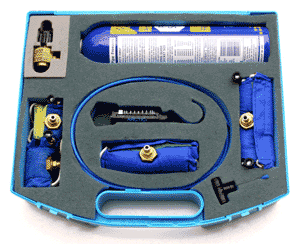 |
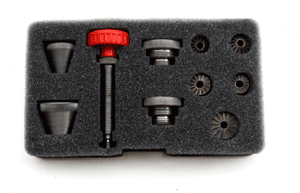 |
The pipe freezer used on the Plumbing Maintenance Course |
Some of the tap re-seating tools used on the Plumbing Maintenance Course |
Drainage systems are explained and candidates practice making drainage circuits using solvent bonding and ‘O’-ring fittings. This provides the candidate with practical experience of reading drawings and cutting tubing to size.
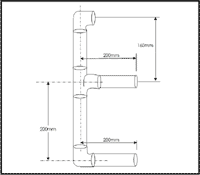 |
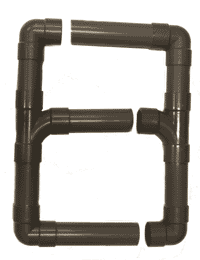 |
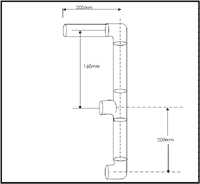 |
The drawing for one of the projects that candidates make on the Plumbing Maintenance Course |
One of the projects that candidates make on the Plumbing Maintenance Course |
The drawing for one of the projects that candidates make on the Plumbing Maintenance Course |
In addition to the important physical skills that candidates acquire (making pipework bends, joints etc as explained in the above), we also look carefully at how each of these components forms part of a complete domestic or commercial heating or hot/cold water system, so that the candidates understand the role of each component and the symptoms associated with their various failure modes. The following are extracts from the course notes covering this section of the course:
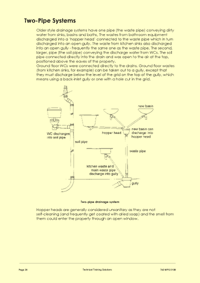 |
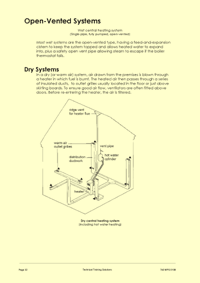 |
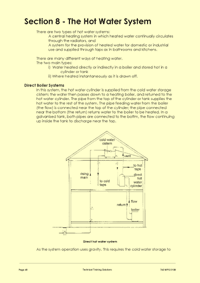 |
Page 26 of the course notes for the Plumbing Maintenance Course, describing two-pipe systems |
Page 32 of the course notes for the Plumbing Maintenance Course, describing open-vented systems |
Page 48 of the course notes for the Plumbing Maintenance Course, describing hot water systems |
If you would like to see some of the equipment used on the Plumbing Maintenance Course for yourself, then please call us to arrange a visit to our offices in Kent. Alternatively, we can visit you anywhere in the British Isles.
